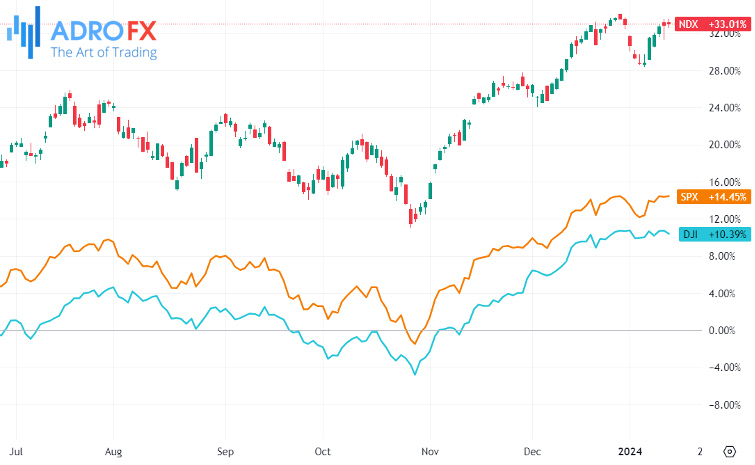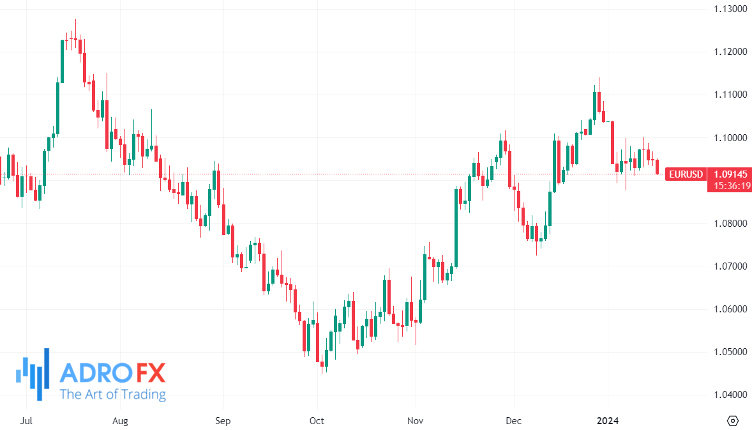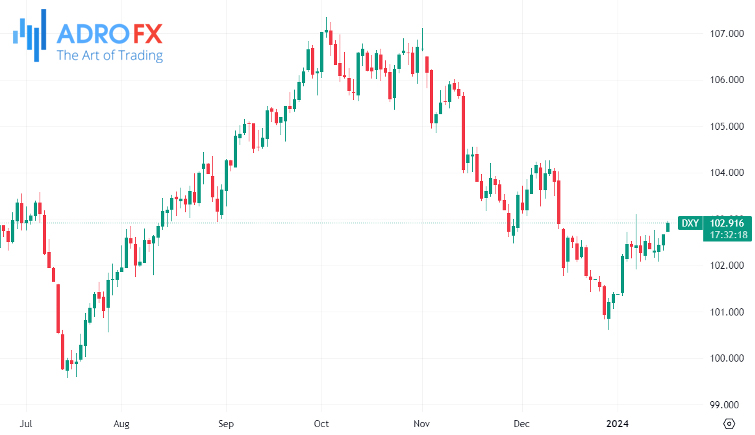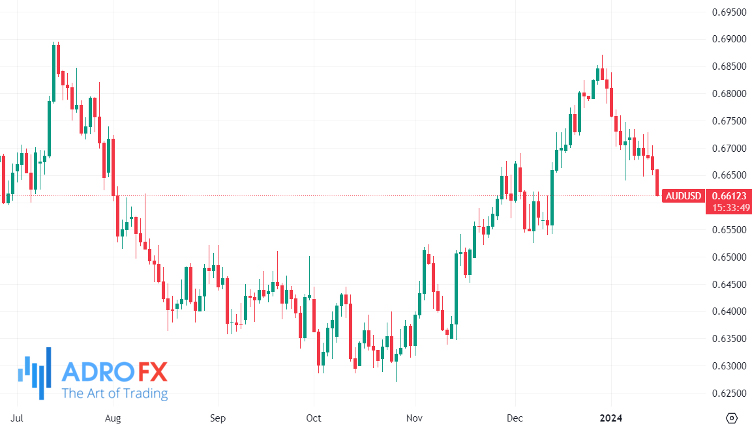Global Markets React to US Stock Decline, Euro's Recovery, and Geopolitical Tensions; Eyes on Bank Earnings and Economic Indicators | Daily Market Analysis

Key events:
- UK - Average Earnings Index +Bonus (Nov)
- UK - Employment Change 3M/3M (MoM) (Nov)
- UK - Unemployment Rate (Nov)
- Eurozone - German CPI (MoM) (Dec)
- USA - NY Empire State Manufacturing Index (Jan)
- UK - BoE Gov Bailey Speaks
- USA - Fed Waller Speaks
On Monday night, US stocks indicated a lower opening as Wall Street awaited forthcoming data and bank earnings, seeking insights into the current state of the American consumer.
The Dow Jones, S&P 500, and Nasdaq 100 all experienced a slight decline of 0.3%, 0.4%, and 0.5%, respectively.

Investors are on the lookout for the release of December retail sales data on Wednesday, a report that could heighten concerns about a recession and economic growth if there's a slowdown in US consumer spending. According to economists surveyed by FactSet, an anticipated increase of 0.2% for the month is slightly lower than the 0.3% rise observed in November.
This abbreviated holiday week will also witness the disclosure of bank earnings, providing further insights into consumer health, along with information on credit card payments and delinquencies. Scheduled to report on Tuesday are Goldman Sachs (NYSE: GS), Morgan Stanley (NYSE: MS), and PNC Financial (NYSE: PNC) Services. Additionally, Charles Schwab (NYSE: SCHW), M&T Bank, and several regional banks are expected to release their earnings throughout the week.
Despite broad-based recovery momentum for the Euro against major currency pairs on Monday, the US Dollar is only marginally ceding ground to the EUR, with US markets closed in observance of Martin Luther King Day.

European Industrial Production experienced a decline in November, in line with market expectations, and the focal point for EUR traders this week will be appearances by European Central Bank President Christine Lagarde at the World Economic Forum in Davos, Switzerland.
The NZD/USD pair fell to around 0.6160 during early European trading on Tuesday. This decline can be attributed to a stronger US Dollar influenced by a risk-off environment and increasing tensions in the Middle East. The US Dollar Index rose to a multi-week high near 102.90.

Geopolitical tensions in the Middle East are dominating market sentiment. According to Iranian state media, the Islamic Revolutionary Guard Corps (IRGC) fired missiles at targets in northern Iraq, with a ballistic missile striking near the US Consulate in Erbil. The resulting uncertainty and geopolitical tension are likely boosting safe-haven assets like the US Dollar while weighing on riskier assets such as the New Zealand Dollar.
On the New Zealand front, the NZIER Business Confidence for the fourth quarter improved significantly to -2.0% from the previous quarter's -52%, as reported by the New Zealand Institute of Economic Research (NZIER) on Tuesday. However, despite the positive data, traders adopted a cautious mood.
Looking ahead, the release of the US NY Empire State Manufacturing Index for January is expected later on Tuesday. On Wednesday, Chinese economic data, including Q4 Gross Domestic Product (GDP), Industrial Production, and Retail Sales, will be closely watched. Additionally, US Retail Sales are due on Wednesday, and on Friday, the New Zealand Business PMI report will be published. These upcoming economic indicators could provide a clearer direction for the NZD/USD pair.

The Australian Dollar continued its downtrend on Tuesday, extending a losing streak that commenced on January 11. The AUD/USD pair is under downward pressure following the release of Westpac Consumer Confidence data for January, indicating a contraction. This decline in consumer confidence may contribute to the growing sentiment that the Reserve Bank of Australia (RBA) might not pursue further policy tightening in its upcoming board meeting in February.

The Consumer Confidence data for Australia, published by the Faculty of Economics and Commerce at the Melbourne Institute, registered a 1.3% decline compared to the previous increase of 2.7%. Despite this negative trend, on Monday, the TD Securities Inflation data for December revealed an uptick, potentially mitigating some of the losses for the Australian Dollar.
With the absence of the US market on account of the Martin Luther King Day holiday, European stocks experienced a decline as comments from several ECB policymakers weighed on sentiment. The policymakers strongly opposed rate cuts in the first half of the year.
As markets prepare for today's European open, which is expected to be weaker following a slide in Asian markets, attention is turning to the UK economy. The UK has exhibited a slightly more resilient performance compared to some of its European counterparts in recent months.
Looking ahead to today's wages data, the coming days have the potential to influence the timing of the first rate cut from the Bank of England.
While inflation remains the central bank's primary focus, recent statements from senior policymakers indicate that concerns about wage growth are also significant. The speed at which wages begin to decelerate will be a crucial factor in the central bank's considerations regarding the timing of a rate cut.
The upcoming wages data, covering the 3 months up to November, represents a crucial test. Although there is a widespread expectation that the pace of wage growth will decrease from 7.3% in October to 6.6% in November, it is still likely to be deemed uncomfortably high when viewed through historical standards.









